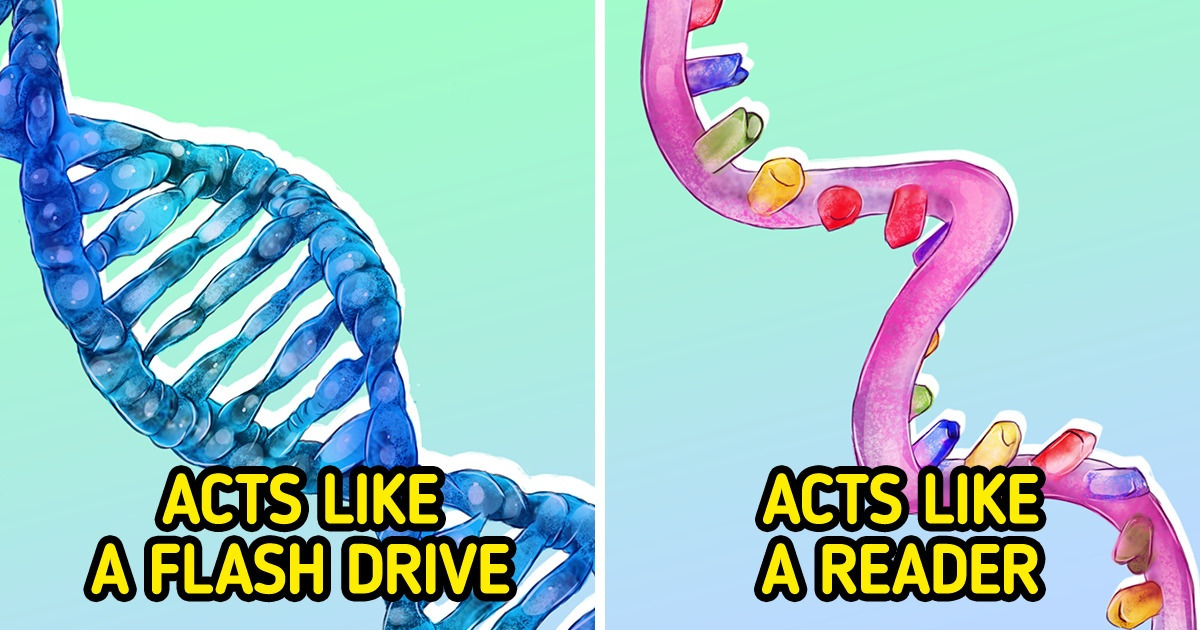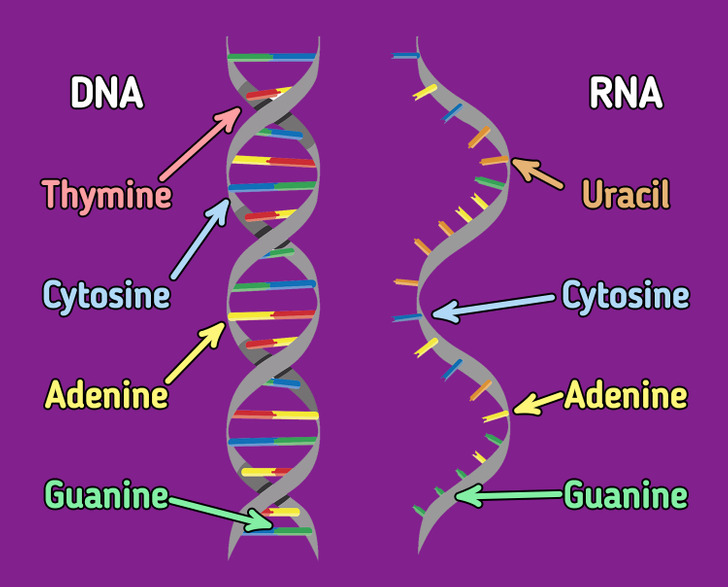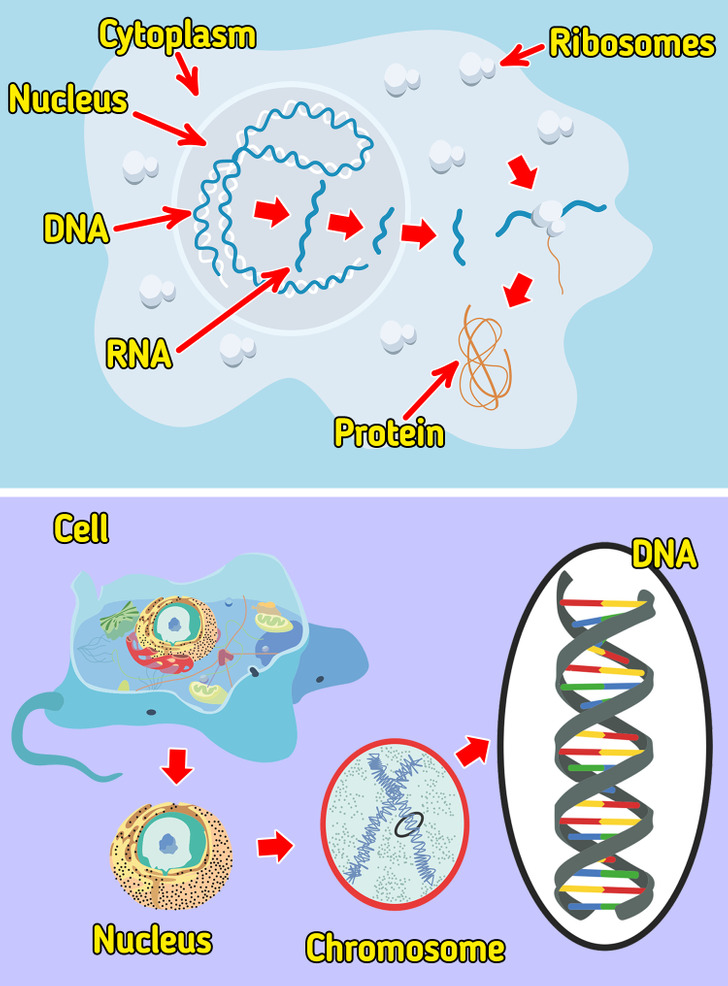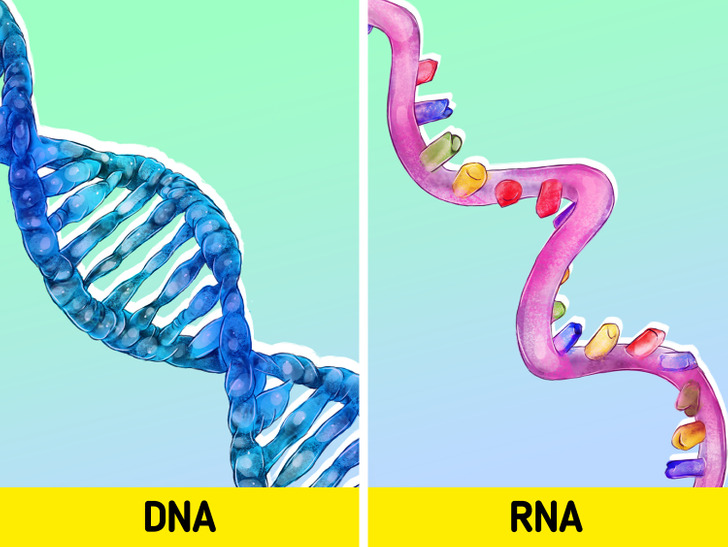The Difference Between DNA and RNA

DNA and RNA are 2 different types of nucleic acid necessary for the functioning of all living organisms. Both are composed of a nitrogenous base, sugars, and phosphates. Both are responsible for storing and reading genetic information. But, despite the apparent similarity, they have significant differences.
5-Minute Crafts would like to explain the difference between DNA and RNA.
Composition

- Structure
DNA consists of 2 strands arranged in a double helix. Each strand is formed by nucleotides, or subunits consisting of a sugar molecule, a phosphate, and a nitrogenous base. RNA consists of only one polynucleotide chain. - Length
DNA is much longer than RNA. If you stretch the entire DNA of a cell, it can reach 10 feet. RNA chains are much shorter. A large RNA molecule might only be a few thousand base pairs long. - Bases
Although both DNA and RNA contain 4 nitrogenous bases, their sets of molecules differ. DNA contains adenine, guanine, thymine, and cytosine, while RNA has uracil instead of thymine (along with adenine, guanine, cytosine). In both acids, the bases pair up. In DNA, adenine combines with thymine, and cytosine combines with guanine. In RNA, cytosine also combines with guanine, and uracil combines with adenine. - Sugar
Both nucleic acids contain sugar. In DNA, it’s deoxyribose; and in RNA, it’s ribose.
Location

Functions

The main function of deoxyribonucleic acid is the storage and transmission of genetic information. The DNA molecule acts like a flash drive: it records data and allows it to be passed on to other generations. The transfer of information occurs due to DNA replication, during which 2 identical replicas of DNA are produced from 1 original DNA molecule.
RNA acts as a messenger between DNA and ribosomes. It collects the coding information from DNA and translates it into a chain of amino acids, which are involved in the production of protein. The process has several stages. Each stage involves different types of RNA.
If we imagine that DNA works like a flash drive, then RNA acts as a reader that decodes this flash drive.